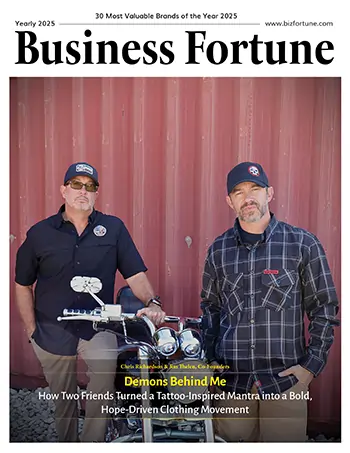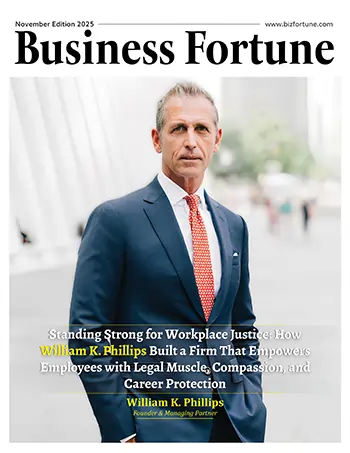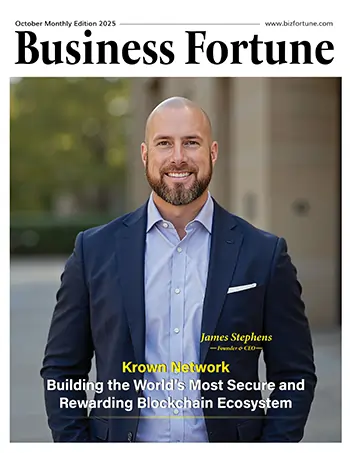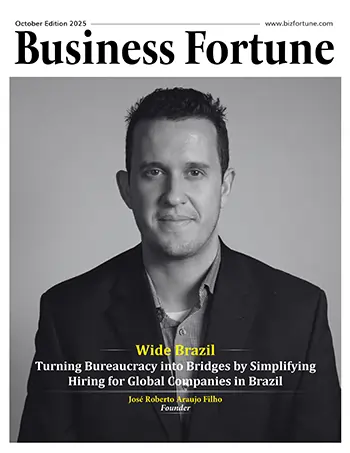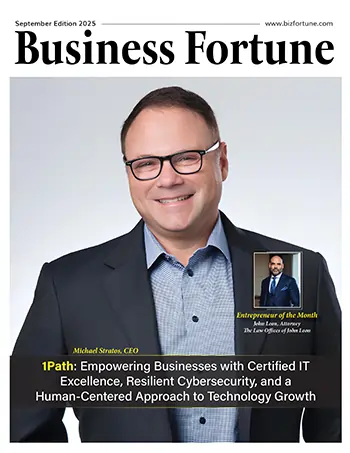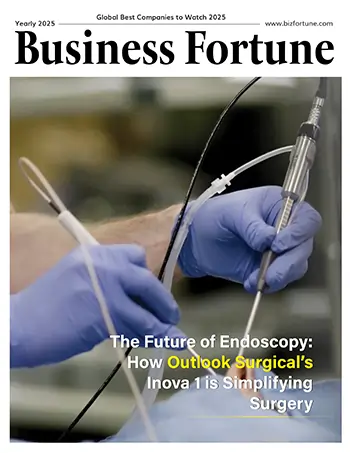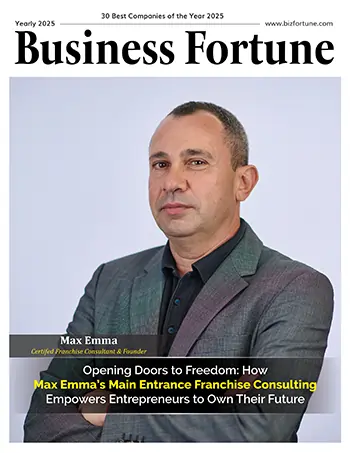30 Best Companies of the Year 2025
Business Fortune
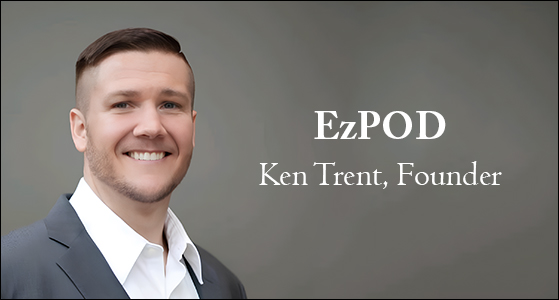
ezPOD is addressing a major challenge in the construction industry by replacing traditional paper-based proof of delivery systems with a modern digital solution. Founded by Ken Trent, the company developed a platform that makes it easier for contractors, material providers, and lenders to track deliveries with accuracy and speed. Using AI, GPS tracking, digital signatures, and timely notifications, ezPOD makes sure that delivery documentation is clear, accessible, and stored permanently.
This invention helps contractors get paid faster, reduces delays on job sites, and gives lenders greater confidence by verifying materials were delivered before funds are released. By organizing deliveries into zones and projects and allowing easy sharing with all relevant parties, ezPOD improves communication and minimizes disputes. Its mobile app allows drivers to update delivery status on the go, while AI tools digitize existing paper PODs for convenience.
We at Business Fortune had the opportunity to speak with Ken Trent, founder of ezPOD, about the inspiration behind the platform, how it works, and how it’s helping modernize the construction industry by changing proof of delivery processes for contractors, material providers, and lenders.
Interview with Ken Trent, Founder of ezPOD
How did ezPOD begin? What is the story of the company?
I started ezPOD when I was the president of BIMQuote, a tech company that focuses on construction material orders for large-scale projects. I realized that many material providers were still using carbon copy paper proof of delivery (POD) that easily becomes illegible, lost, or wrinkled/torn or gets liquid stains from people putting drinks on it. I saw this as an opportunity to bring construction PODs into the modern era with digital PDFs that could be emailed to stakeholders and which include photo verification, GPS tracking, timestamps, digital signatures, APIs, and more. My team and I got to work immediately to develop a web and mobile app to deliver this solution that helps material providers, contractors, and lenders by acting as a source of truth on exactly what was delivered, exactly when it was delivered, and exactly where it was delivered, as well as to facilitate communication between all parties and be stored permanently for record-keeping until the project was successfully closed out.
How has the company grown since its foundation? What are some of the factors that have led to the growth of the company?
In the earliest stages, we started with just a web app. We quickly realized that we needed a mobile application that could solve a lot of the “on the go” needs that a delivery driver or contractor would have when the materials were actually getting delivered. So we built the solution for that as well. We also realized that—although the construction industry as a whole is well behind the technological curve—some companies would want systematic solutions that could only be possible with a complete API option for creating and managing proof of delivery documentation, so we built that. Now that the foundation has been laid, we have successfully exited our beta testing phase and are in full commercial operation. We are now working on custom feature development for our critical clients to meet their individual needs (which we intend to make available to all users).
What were some of the key challenges the company overcame during its lifetime? What were the takeaways?
As with many SaaS companies, adhering to tight delivery timelines and quality standards remained the top focus for us. Scope creep was also challenging because there are so many ways to improve the delivery process that we really had to focus on what we believed were core features that would provide a baseline of excellence for our customers to use. We can always add more features down the road, but for our initial foray into the commercial world, we needed to focus on the highest value items first.
What are the services provided by ezPOD? Can you detail them for our readers?
ezPOD provides digital Proof of Delivery (POD) documentation for construction material providers, drivers, contractors, and lenders. Our AI capabilities can be utilized to take a photo of existing paper PODs to digitize the list of materials and quantities. Once created, the POD can be physically printed and attached to the materials, after which the driver can scan a QR code on the POD to indicate that the materials are loaded and out for delivery, then scan the QR code again to indicate that the materials have been delivered. The driver can then take photos of the delivery and digitally attach them to the POD and collect a digital signature from the designated recipient on site. All of these details are captured on the POD itself as well as timestamps for each status change. Live tracking (visible in the ezPOD mobile app) is captured and displayed while the material is in transit, and immediate notifications of delivery to key stakeholders take place at critical steps in the material delivery process. Finally, we offer full API integration to create and manage PODs for tech-enabled companies that want an easy-to-use and elegant solution without building their own POD system.
How can ezPOD improve the customer experience compared to traditional paper-based proof of delivery systems?
ezPOD removes the problems associated with paper-based POD systems, such as cluttered offices or additional filing space requirements to store the actual papers; illegible PODs from poor handwriting or moisture from coffee mugs or other drinks; imperfect carbon imprinting on secondary pages (i.e., the pink and yellow copies underlying the actual copy written on); misplaced PODs; etc. Additionally, the QR code feature and the mobile app help to ensure that the correct materials are delivered to the correct jobsite and that the correct documentation is tracked. Finally, it acts as a complete source of truth—with photos of the delivery, timestamps of the delivery, geolocation tracking of the delivery, etc.—so all parties involved know exactly what was delivered, where it was delivered to, and when the delivery took place.
In what ways does ezPOD simplify communication and reduce the risk of delivery disputes between contractors and material suppliers, especially compared to outdated paper-based systems?
ezPOD simplifies communication in several ways: First, the immediate notifications of status changes and the delivery itself are automated and standardized so that all parties are notified without fail at the time of delivery. Secondly, it reduces some of the communication back-and-forth that wastes time, such as calling the driver to ask where the delivery is or when he will be there (the driver’s location can be easily seen in the mobile application by the contractor). Thirdly, by providing access to the POD to all parties, there is no need for anyone to ask the material provider for a copy of the POD—they can simply log into their account and view it themselves. Finally, our robust APIs make it easy for PC-to-PC communication to happen to trigger key process steps without the need for manual intervention.
How does ezPOD organize and manage PODs using zones, projects, and stakeholders, and what tools help ensure accurate delivery tracking and easy sharing with all relevant parties?
POD documentation is organized into zones and projects for easy tracking and management. For example, a Zone may be the name of the development/plat/neighborhood (such as “Sunrise Village”), and the Project may be the specific lot/house within that development (such as “Lot 10” or “123 ABC St.”). Additionally, stakeholders—such as the contractor’s lender/finance company, a 3rd-party inspection company, or an investor—can be added at all levels of the POD—the Zone (and all Projects/PODs within it), the Project (and all PODs within it), or an individual POD itself. These stakeholders are notified via email when the POD is marked as Out for Delivery, as well as when the POD is marked as Delivered and Signed. Also, the driver and material provider can manually share the POD with any or all stakeholders assigned at any time.
What are ezPOD’s plans for the future?
Over the next 6 months or so, we intend to continue to refine our current offering and ensure that we are delighting our current users and making proof of delivery seamless and easy. Once we feel we are meeting this objective, we will continue to expand on our process optimization features to reduce the manual work that is often required in a delivery scenario where multiple parties are involved. We expect that to take an additional 6-12 months. After that, we intend to cater to the needs of financial institutions and lenders by offering features that help builders comply with the lender requirements, such as installation verification and accessible documentation storage. Along the way, our goal is simply to make this process the very best that it can be and to support our users in the great work that they’re doing—building the future of America.
Would you like us to highlight something important happening in your company that we may have missed asking about?
In addition to making this whole process easy and seamless, we have also tried to make it economical. There are NO recurring user fees or subscriptions. There is a simple pay-per-use model of $2.99 per POD and no additional fees to store the documents or anything of the sort.
Ken Trent | Founder
Ken Trent is the Founder of ezPOD. Ken Trent has spent more than 20 years in e-commerce and technology/SaaS roles, including time spent at Amazon, Bandai-Namco, and Builders Capital, prior to founding ezPOD.
















